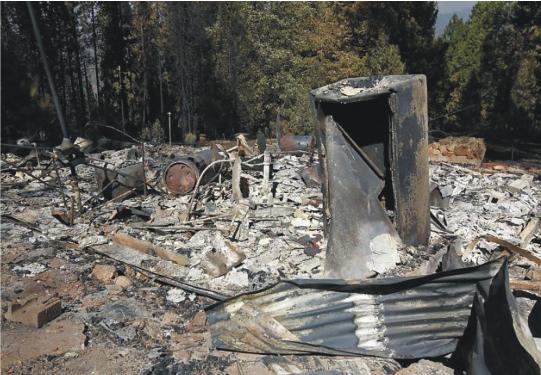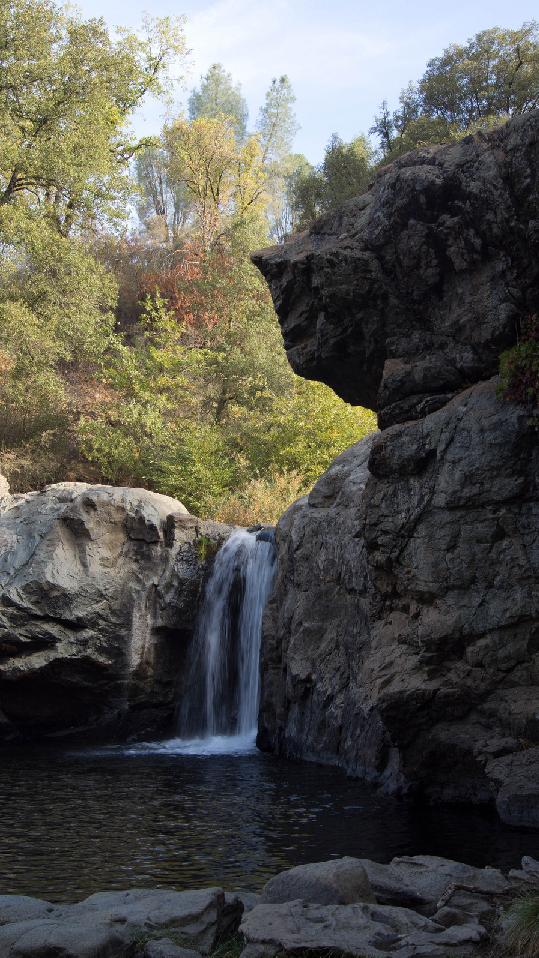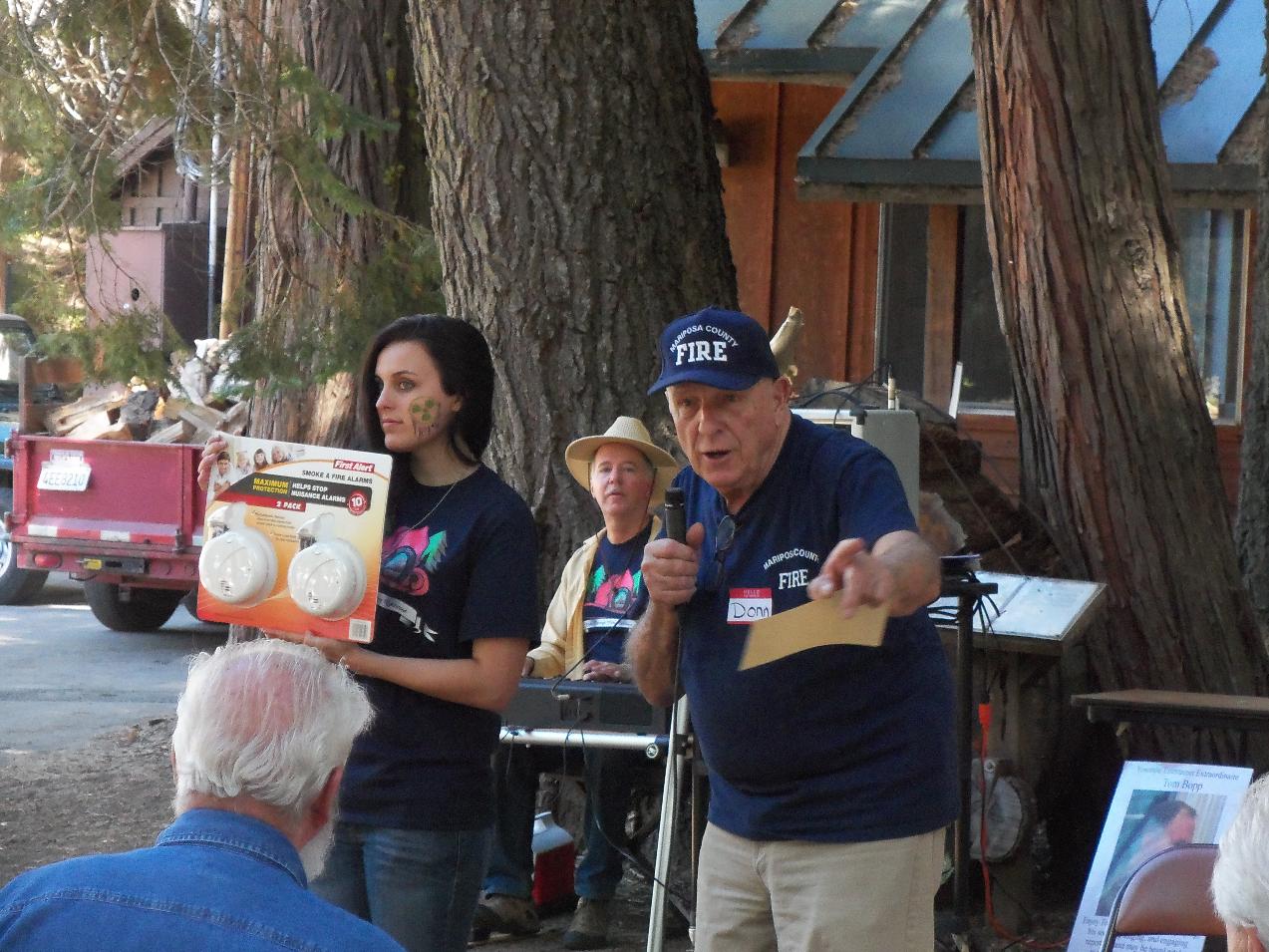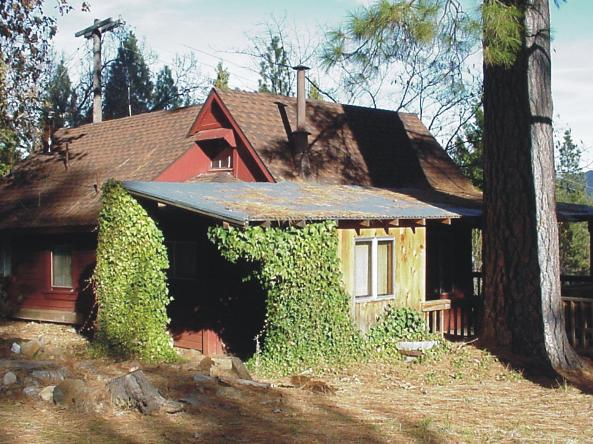TUOLUMNE COUNTY – The numbers listed of structures lost on the Rim Fire are just data to some. But for Donn Harter of Fish Camp, one of those structures consumed by the fire was his boyhood home along the south fork of the Tuolumne River.
“When I saw this photo go up on the news, I said ‘that’s my little cabin,'” said Harter, as we sat on the deck of his mountain home in Fish Camp, just days after his trip to see what was left of the family ranch.
He had headed for Tuolumne County when he heard that the fire had crossed the road to the south. That’s when he discovered that all five buildings on the property, along with most of the trees, were lost.
“We hadn’t lived in it in years, but it’s still home,” he said of the cabin where he grew up. It was originally a 16×20′ housing unit, moved from the Hetch Hetchy workers housing area by his grandfather, who bought the property from the Elwells in 1916.

In 1937, his grandfather moved two of the Hetch Hetchy cabins to the property. They were loaded by rail crane onto a buckboard, and each was transported the mile or so to their destination, where they were off-loaded on skids onto a rock foundation.
Donn and his younger brother Pete moved with their mother from San Francisco to the 160-acre ranch known as Colfax Springs, when he was just 5 years old.
“The name came about because Vice-President Colfax stopped there on one of his trips and said it was the best water he’d ever tasted,” said Harter.
His grandmother came to live with the little family about a year later. She moved into the second cabin, which had been set up just across the knoll, with a view upcountry of Rancheria Mountain.
“We all three, or four of us at times, lived in this one room cabin with a ladder straight up the wall to a hole in the loft floor,” he recalls. “My mother added on to it over the years, but not until after we had all gone.”
Harter says with the little bit of inheritance from his grandfather, who was one of the contractors who worked on the Golden Gate bridge, he and his family got along.
“We had five acres of apples, mostly apples, some pears and plums. The orchards were there before my grandfather took it over, and we’d get five to seven tons of apples a year.”
As a young boy, he remembers the California Conservation Corp coming from Buck Meadows to pick the fruit, splitting the harvest with the family.
“I can remember my mom taking their terrible sandwiches and grilling them for them,” he grins, “because they made the sandwiches in stacks – five slices of bread stacked up, with the filling in between. The logging camps did it the same way.”
Harter says they eventually got a cow, but for the most part they didn’t have any stock, except for some chickens.
“The winter of ’37 was really tough,” he recalls. “The snow got so deep that we were snowed in for about three weeks. My mom always bought two types of food for the chickens. Scratch in 100 lb. sacks, and 100% whole wheat. Well, the 100% whole wheat, we ate.”
They were also helped out that winter by a trapper who lived up in the mountains above the ranch.
“He came out after a terrible snowstorm. The snow was probably four or five feet deep, and he trudged up to the cabin one day with a pack on his back and unloaded all this food for us, including some venison. Can’t even remember his name now. It just always surprised us to see anybody up there, ever.”
At their elevation of about 3,400 ft., Harter says normally the snows would come and go, but that winter it didn’t happen that way.
“It would open up enough so a vehicle could get through,” he says. “There were some people who lived at Hardin Flat five miles from us toward the park, and they had Model T’s. They’d come chugging out of there; names were Sharkey Payne and Hank Swank. I don’t know Hank’s real name, but I do remember he was always drunk.”
Every weekday Donn and his brother would walk to the one-room school house three miles away in Buck Meadows.
“There were eight grades in one room,” he says. “My mother did some writing, and she taught us how to read and write before we started school. By the time I was in the 4th grade I was helping out the 8th graders. The building is still there, but somebody lives in it now.”
State Route 120 was a dirt road when the family first arrived. “I think it was in 1941 that the highway was completed from Crane Flat to the valley floor. It was still a seasonal highway until 1977 when the new highway was constructed from Groveland up to Crane Flat.”
But before the area was opened up with the coming of passable roads, Harter says he made a few treks into Yosemite on his own.
“When I was older, maybe 14 or 15, I made my first hike into the valley floor,” he recalls. “Big Oak Flat Road was not really a highway then, and I’d hike over there to Crane Flat and down to the valley, about 32 miles.”
Harter tells of stopping on his treks at Crocker Station, a way station with a hotel for travelers into the park, about 10 miles from their place.
“Sometimes I’d make special trip there just to see Pete Molander, who was an old sourdough. He taught me how to play cribbage, and he had this black ugly stuff in a quart mason jar. It was pine tar, and you’d rub it on an open wound and it did a lot of good. But you also put it on a spoon and put it in your mouth and let it dissolve down your throat. It was supposed to be used for any internal problem, cold or flu. Wonder it didn’t kill me!”
It was 16 years before they got electricity at the cabin, and his mom bought a Servel refrigerator which Harter says was the first one in the mountains.
Of all his adventures and treasured memories of the ranch, his favorite is of the swimming hole on the south fork of the Tuolumne River.

“It was just off the property, and we’d swim there nearly every day,” he remembers with a smile. “I’d go behind the falls from the balcony at the Cliff House, and dive out and then float down the river face-down. People would panic and scream ‘Save him! Save him!’ I could hold my breath for about two minutes.”
It was here also, when the old Cliff House stood on this spot overlooking the pool, that he met his wife-to-be Helen Edes. They were married in 1951, and the next chapter of his life began, far from the little cabin and the solitude of the mountains.
Donn had spent one year going to school in Yosemite Valley while his mother worked at the Ahwahnee Hotel, and came to know Ansel Adams, whose children attended the same school.
He then went on to high school in Sonora and Mariposa, worked one season for the West Side Lumber Company as a faller, and then moved with his new bride to southern California where he went to work for her father in his glass business.
“I grossed $1,800 in two months logging,” he recalls. “I went to work that fall in the auto glass business at $45 a week. But I figured I had to learn something different. Logging just wasn’t it for me.”
After managing and helping to start several more glass shops with his father-in-law, Louis Edes, Harter went into business for himself as the owner of Hal’s Glass, which still thrives in southern California, run by his daughter, Karen Colacino.
In 1975, he and Helen fell in love with an unimproved 2 ½ acre parcel above Fish Camp, and the work began on yet another new chapter.
“There was no road, water, electricity, or sanitation system. In the spring and summer of 1976, I constructed the winter-tight structure, developed water, and a septic system. Oh yes, I built a path to our cabin called a road.”
That winter, he finished the interior of their 24’x36′ cabin, complete with a loft, and began putting down deep roots in another Sierra mountain home.
Through the loss of his wife in an auto accident in 1990, and the death of his eldest son Tim in an avalanche in Taos, New Mexico in 1996, Harter has always kept pushing forward with a staunch can-do attitude.
Always one to be heavily involved in civic activities, that didn’t change with the move to Fish Camp.

He also helped to form the Cedar Creek Road and Water Improvement Association, and the County and the Forest Service contract with him to clear the county roads in Fish Camp and maintain the snow play area at Goat Meadows.
“Little did I realize when I retired as President and Director of Technical Services for the Americas Glass Association in March of 2011, that I would be busier than ever,” he said. “With the Commissioner’s duties and the Fish Camp activities, I have to force myself to stop and smell the pine needles.”
As for the devastation at his beloved ranch, Donn is pragmatic.
“I’m not going to rebuild, and I don’t want to sell it. The kids can do whatever they want over there. I’ll go back in a few days and look things over.”
Though the old stomping grounds near the Tuolumne River will always live in his heart as home, it is certain that this 82-year-old “force to be reckoned with” has enough to keep him busy in Fish Camp these days.




Gina, thank you for the wonderful article about Donn Harter and the old family ranch. I am grateful that he is my neighbor here in Fish Camp and he is truly one of a kind.